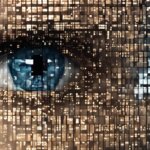Table of Contents
Deepfake technology is a powerful form of artificial intelligence (AI) that enables the creation of highly realistic fake images, audio, and video content. By utilizing deep learning algorithms and face-swapping techniques, deepfake AI can manipulate existing source material or generate entirely new content. However, the increasing prevalence of deepfakes poses a significant threat to media authenticity and has far-reaching implications for society.
Deepfakes are designed to appear as genuine as possible, often making it difficult to distinguish between real and manipulated content. This has serious implications for the credibility of information we encounter in our daily lives. Deepfakes can be utilized for various purposes, including entertainment, customer support, and caller response applications. However, there are growing concerns about their potential to interfere in elections, perpetuate misinformation, and deceive individuals.
The technology behind deepfakes involves the use of sophisticated deep learning algorithms, neural networks, and high-performance computing. These systems analyze and understand patterns within data to generate convincingly fake content. As AI technology continues to advance, deepfakes are becoming increasingly indistinguishable from authentic media.
It is essential for individuals and society as a whole to understand the implications of deepfake technology. By gaining insights into how deepfakes are created, their common uses, and the challenges they present, we can better equip ourselves to detect and combat this growing threat. In the following sections, we will delve deeper into the workings of deepfakes, their potential applications, and the methods employed to defend against them.
How do Deepfakes Work?
Deepfakes are created using two algorithms – a generator and a discriminator. The generator builds a training dataset based on the desired output and creates the initial fake content, while the discriminator analyzes the realism of the initial content and provides feedback for improvement. This iterative process allows the generator to create more realistic content, while the discriminator becomes better at detecting flaws. The combination of these algorithms forms a generative adversarial network (GAN), which uses deep learning to recognize patterns and generate convincing fakes.
Deepfake videos can be created by either using an original video source and making someone say or do something they never did, or by swapping a person’s face onto another individual in a process known as face swapping.
The generator builds a training dataset based on the desired output and creates the initial fake content, while the discriminator analyzes the realism of the initial content and provides feedback for improvement.
Deepfakes rely on the power of deep learning algorithms and artificial intelligence to manipulate and generate realistic content that can be incredibly convincing. With these technologies, it becomes increasingly challenging to distinguish between real and fabricated videos, posing significant risks for misinformation and fraud.
Face Swapping: A Key Component of Deepfake Videos
In the deepfake creation process, one popular technique is face swapping. This involves replacing one person’s face in a video with the face of another individual, creating a seamless visual transition that makes it appear as if the person in the original video is saying or doing something they never did.
By using deep neural networks to analyze and process facial features from both the source video and the target face, the generator algorithm can accurately map the expressions and movements of the target face onto the source video. As a result, deepfake videos can convincingly portray individuals engaging in actions or making statements that they never actually did.
While the advancements in deepfake technology offer exciting possibilities in various domains such as entertainment and visual effects, they also raise concerns about their potential misuse, deception, and the ethical implications they carry.
| Pros | Cons |
|---|---|
| – Entertainment value | – Spread of misinformation |
| – Enhanced visual effects possibilities | – Potential for political manipulation |
| – Creative applications | – Risks in privacy and consent |
Common Uses and Implications of Deepfakes
Deepfakes, both legitimate and malicious, have found a variety of applications across different industries. On one hand, they provide a means for artistic expression, entertainment, and enhanced customer experiences, such as in caller response services and customer phone support. Deepfakes have also been used for pranks and comedic purposes, adding an element of amusement to online content. However, on the other hand, the implications of deepfakes can be highly concerning, with risks and dangers that extend beyond entertainment value.
One of the most alarming risks associated with deepfakes is blackmail and reputation harm. Using deepfake technology, individuals can create videos that falsely depict another person engaging in inappropriate or illegal activities. These fabricated videos can then be used as a tool for blackmail or to damage someone’s reputation, causing significant distress and harm.
Another worrying aspect of deepfakes is their potential for political manipulation. Deepfakes can be employed to spread misinformation, manipulate elections, and deceive the public. By presenting falsified speeches or interviews, deepfakes have the capability to sway public opinion, undermine trust in institutions, and disrupt democratic processes.
Deepfakes also give rise to concerns regarding fraud and identity theft. Sophisticated deepfakes can be used to impersonate individuals, tricking others into divulging personal and sensitive information. With access to convincing depictions of trusted individuals, perpetrators can carry out various forms of fraud, posing a significant threat to individuals and organizations alike.
The lack of laws specifically addressing deepfakes makes it challenging to combat their harmful effects. It is crucial for governments and tech companies to work together to develop regulations, tools, and strategies that can effectively detect and mitigate the risks associated with deepfakes.
Overall, while deepfakes have legitimate applications, the risks and dangers they pose in terms of blackmail, reputation harm, political manipulation, misinformation, and fraud cannot be overlooked. Efforts must be made to stay vigilant and proactive in dealing with the potential harm caused by deepfake technology.
Detecting and Defending Against Deepfakes
Detecting deepfakes can be challenging, but there are some signs that can help identify potentially deceptive content. One common indicator is unusual or awkward facial positioning, where the subject’s face doesn’t quite align with the rest of their body. Unnatural facial or body movement is another red flag to look out for. Additionally, inconsistent audio, where the sound doesn’t match the speaker’s mouth movements, can be a sign of deepfake manipulation. It’s also important to be cautious of suspicious source email addresses, as they may be linked to the distribution of deepfake content.
However, it’s worth noting that AI technology is constantly progressing, and some of these traditional signs of deepfakes can now be overcome. The creators of deepfakes are becoming more skilled at simulating realistic movements and ensuring audio synchronization, making it harder to detect manipulated content.
To defend against deepfakes, companies and organizations should implement strict verification processes to ensure the authenticity of the content they share. Advanced AI algorithms can be employed to analyze and detect signs of deepfakery. Educating users about the risks of deepfakes is essential to help individuals identify and avoid spreading deceptive content. Developing technologies for deepfake detection and regulation is crucial in combating the spread of this harmful technology and preserving the integrity of media in the digital age.
FAQ
What is deepfake technology?
Deepfake technology is a type of artificial intelligence used to create convincing images, audio, and video hoaxes. It involves using deep learning algorithms and face-swapping techniques to manipulate existing source content or create entirely original content.
How do deepfakes work?
Deepfakes are created using two algorithms – a generator and a discriminator. The generator builds a training dataset and creates the initial fake content, while the discriminator analyzes the realism of the content and provides feedback for improvement. This process forms a generative adversarial network (GAN) that generates convincing fakes.
What are the common uses and implications of deepfakes?
Deepfakes have a wide range of applications, including art, entertainment, caller response services, and customer phone support. However, they also pose significant risks and dangers. Deepfakes can be used for blackmail, reputation harm, nonconsensual deepfake porn, political manipulation, misinformation, stock manipulation, and fraud.
How can deepfakes be detected and defended against?
Detecting deepfakes can be challenging, but some signs to look out for include unusual facial positioning, unnatural movement, inconsistent audio, and suspicious source email addresses. To defend against deepfakes, companies can implement strict verification processes, use advanced AI algorithms for detection, and educate users about deepfake risks. Developing technologies for deepfake detection and regulation is also crucial.







